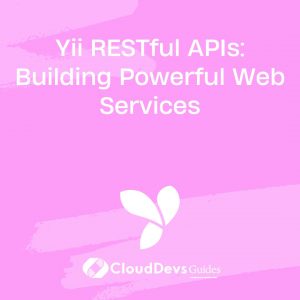Yii vs. Laravel: Choosing the Right Framework for Your Project
When it comes to building web applications, choosing the right framework can significantly impact the success of your project. Yii and Laravel are two popular PHP frameworks that offer powerful tools and features to streamline development. In this blog, we will compare Yii and Laravel to help you make an informed decision and choose the framework that best suits your project requirements.

1. Overview of Yii and Laravel
1.1. Yii
Yii (Yes, it is!) is a high-performance PHP framework known for its simplicity and extensibility. It follows the MVC (Model-View-Controller) architectural pattern and provides a robust set of features, including caching, authentication, security, and internationalization support. Yii is known for its rapid development capabilities and ease of use.
1.2. Laravel
Laravel, on the other hand, is a popular PHP framework that focuses on developer productivity and elegant syntax. It emphasizes the use of clean and expressive code and offers a wide range of features like routing, caching, ORM (Object-Relational Mapping), and authentication. Laravel’s ecosystem includes a vibrant community and an extensive library of packages.
2. Features and Flexibility
2.1. Yii Features
Yii offers a rich set of features out of the box, including database abstraction, caching, security, RESTful API development, and testing support. It provides a powerful command-line tool, Gii, which generates code for models, controllers, and CRUD operations, saving development time. Yii also supports modular application development, allowing you to organize your code into reusable modules.
Code Sample:
php
// Example of using Yii's database query builder
$users = Yii::$app->db->createCommand('SELECT * FROM users')->queryAll();
2.2. Laravel Features
Laravel provides a wide range of features, such as routing, database migration, queueing, task scheduling, and testing. It includes an expressive query builder called Eloquent ORM, which simplifies database operations. Laravel’s Artisan command-line tool enables developers to generate code, run tests, and perform various tasks easily.
Code Sample:
php
// Example of using Laravel's Eloquent ORM
$users = User::where('status', 'active')->orderBy('created_at')->get();
3. Performance and Scalability
3.1. Yii Performance
Yii is known for its exceptional performance, thanks to its optimized codebase and efficient caching mechanisms. It provides multiple caching options, including file-based, database-based, and Memcached, to improve response times. Yii’s lightweight design and lazy loading of components contribute to its superior performance.
3.2. Laravel Performance
Laravel, although not as performant as Yii, offers good performance for most applications. It utilizes a caching system, supports multiple cache drivers, and provides tools for query optimization. Laravel’s query builder and Eloquent ORM are designed to optimize database interactions, resulting in efficient data retrieval.
4. Community and Ecosystem
4.1. Yii Community
Yii has a dedicated and active community of developers who actively contribute to its growth. It offers comprehensive documentation, tutorials, and forums to help developers troubleshoot issues and share knowledge. The Yii community continuously releases extensions and plugins, expanding the framework’s capabilities.
4.2. Laravel Community
Laravel boasts one of the largest and most vibrant communities in the PHP ecosystem. The community actively maintains and updates Laravel, provides extensive documentation, and offers numerous online resources, including video tutorials and forums. Laravel’s ecosystem includes a vast collection of packages, making it easy to integrate additional functionality into your application.
5. Learning Curve and Documentation
5.1. Yii Learning Curve
Yii’s learning curve is relatively steeper compared to Laravel. Its extensive feature set and powerful capabilities may require some time to grasp fully. However, Yii’s documentation is well-structured and comprehensive, providing clear guidance on various aspects of the framework.
5.2. Laravel Learning Curve
Laravel prides itself on having an intuitive and beginner-friendly learning curve. Its elegant syntax and expressive code make it easy to understand and write clean code. Laravel’s documentation is thorough and covers a wide range of topics, making it easier for developers to get started quickly.
6. Choosing the Right Framework for Your Project
When deciding between Yii and Laravel, consider the specific requirements and nature of your project. If you prioritize performance, extensibility, and rapid development, Yii might be the better choice. On the other hand, if developer productivity, a vibrant community, and an elegant syntax are your priorities, Laravel would be an excellent fit.
Both Yii and Laravel have their strengths and weaknesses, so it’s crucial to evaluate your project’s needs and assess which framework aligns better with your goals.
Conclusion
Choosing the right PHP framework for your project is essential for its success. Yii and Laravel are both powerful frameworks with distinctive features and communities. Yii offers exceptional performance and extensibility, while Laravel focuses on developer productivity and elegant code. Consider your project requirements, performance needs, community support, and your team’s expertise when making your decision. With the right framework, you can streamline development and build robust web applications efficiently.
Table of Contents








